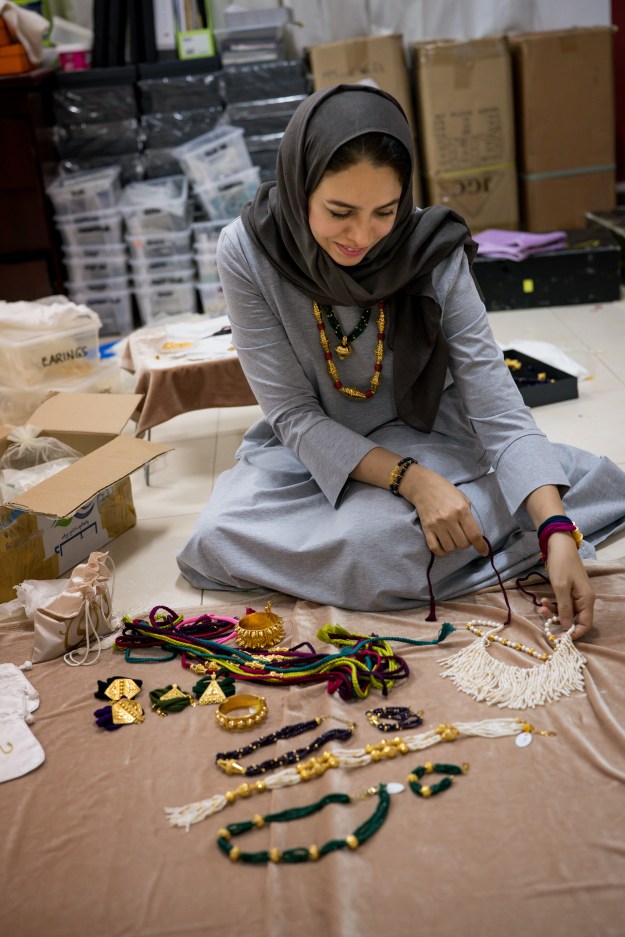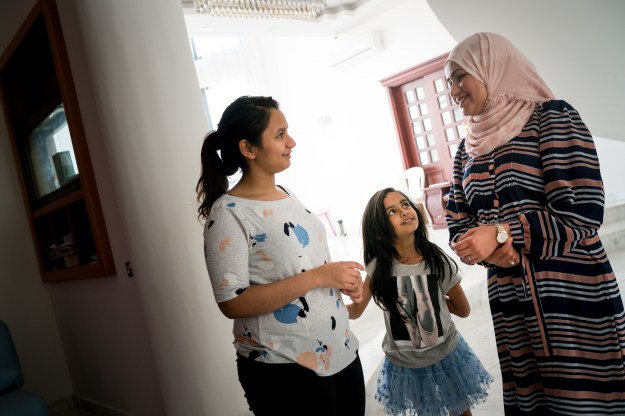The first few times I visited Muscat was to photograph weddings. I noticed immediately the fusion of different ethnicities, cultures, and religious sects on more than one happy occasion. The gateway to the Persian Gulf, Oman ruled the horn of East Africa for many years. Today its people have origins in Zanzibar, Persia, the Arabian Peninsula, and India. Intermarriage between Sunnis, Shiites, and Ibadis is not uncommon, unlike in most other Arab countries. And nearly everyone in Oman is trilingual, speaking Arabic and English as well as a language associated with an ethnic background, like Hindi.
Omanis are the most humble, generous, and welcoming group of people I have encountered in all my travels. The gender equality enjoyed by Omani women is especially noteworthy. Each woman I met was highly motivated, and she constantly encouraged other women to pursue their aspirations, be it in art, engineering, or medicine. Every woman would name the many others who had paved the way for her. Other female peers avowed that a woman should work in any industry she chooses.
Today women account for 30 percent of the workforce in Oman, a number that is still low on a worldwide scale but is nearly double what it was 30 years ago. Two ministers are women, as is Oman’s ambassador to the United States and a former ambassador to the United Nations. For Sultan Qaboos, women play an important role in national development, especially as the country attempts to reduce its dependence on foreign labor. And yet these advances generally concern the highest socioeconomic classes.
As a Saudi, I understand the cultural and societal hurdles that Arab women face on a daily basis. We are expected to have domestic roles, and to marry in our early twenties. Being an engineer, working in a court or even as a scientist is usually frowned upon. Omani women share many of these obstacles, but the women I met explained that millennials were luckier than those before them, because they often had financial support alongside the emotional support of their families. Several of the women I photographed had the opportunity to study abroad to gain a higher degree and returned to Oman motivated to improve their country. Two of the people pictured here were on maternity leave; I was glad to have the opportunity to meet women balancing motherhood with a career.
My favorite part of the project was meeting Safiya Albahlani, an inspiring artist. Though she has been bullied because of her physical disabilities, she has faced every challenge with the goal of becoming stronger. Her adoptive mother, who is single, has proudly hung her canvases on the walls of her house.
Each woman showed me positivity and trust in community and oneself. Perhaps I was lucky to meet them—but I think these are common traits for the women in this country.













